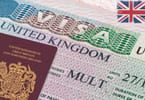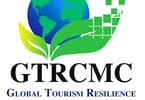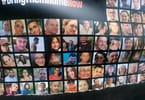(eTN) – Millions of passengers eagerly board cruise lines. In fact, in 2010, CLIA member lines recorded that 14.8 million people (10.29 million from North America) decided to take a cruise. In 2010, the cruise line industry contributed more than $35.8 billion to the US economy and created nearly 330,000 jobs in the US.
For an average of 7 days, passengers expect to be well-fed and pampered, entertained and amused – at a value price. What cruise line passengers don’t expect – is to get sick. Yet, this is exactly what happens. Cruise ships provide ideal conditions for the rapid spread of respiratory viral illnesses. According to the Centers for Disease Control and Prevention (2010), the cruise ship is the perfect environment for the spread of disease, with “…many persons living closely together, frequently interacting in enclosed and partially-enclosed environments, and often originating from both hemispheres.”
In addition to being a host environment for germs, cruise lines employees only appear to be proactive in sanitizing surfaces. Jim Walker, Esq. a legal expert in cruise law found that, “Cruise line cabin crews substitute sanitizing sprays for water (because they don’t like the smell), and spread germs throughout the cabins, without a thought to the fact that they are dispersing germs and not killing them.”
20 Years and Still Learning
In 1975, the Centers for Disease Control and Prevention (CDC), Vessel Sanitation Program (VSP), began surveillance for enteric diseases aboard passenger cruise ships in response to widespread findings that food handling and water sanitation practices were deficient and posed a significant potential for transmission of food-borne and water-borne diseases.
Influenza viruses are usually transmitted from person-to -person via respiratory droplets expelled through coughing and sneezing. Affected individuals typically drink/ingest contaminated water (includes water stored on cruise ships; food handled by an infected food service worker; and foods washed in contaminated water such as shellfish, fruits, and salad ingredients. Symptoms include diarrhea, nausea, vomiting, abdominal cramps, headache, and low-grade fever that appears 24-48 hours after infection and lasts 12-60 hours, according to Dr. Chris Allison in the Canadian Medical Association Journal (2003).
Germ Hunters
The first place for caution is getting onboard the ship and grabbing the handrails, which are touched by everyone, as viruses are brought on by passengers and crew. The next place for vigilance is public restrooms. A study in the Journal of Infectious Diseases found that only 37 percent of 273 randomly-selected public restrooms on cruise ships were cleaned daily; another researcher found that only 25 percent of restroom exit door handles were cleaned daily.
Caution is recommended at the buffet table. In June 2010, 260 Disney Magic passengers developed gastroenteritis. The US Centers for Disease Control and Prevention (CDC) traced the illness to shrimp served on the lunch buffet as the ship left port. “…A variety of bacterial and parasitic and parasitic pathogens” were found in stool samples of passengers who ate the shrimp,” the report stated.
In April 2009, the Holland America Line’s Amsterdam ship reported an outbreak of Cyclospora Cayetanensis (a one-celled microscopic parasite), with 10.24 percent of the 1,318 passengers and 4.17 percent of the crew becoming ill. The parasite is spread by people ingesting something (e.g., food or water contaminated with feces). It is thought that the parasite was transmitted through fresh fruits or vegetables brought onboard in South America. It is likely that cruise passengers consumed large amounts of the fresh fruit from the ship’s buffet thinking they were getting value from their cruising dollars. In reality, by ingesting large amounts of fresh fruit, they put themselves at a higher risk for E. coli and salmonella, which often leads to intestinal upsets and Norovirus.
Norovirus symptoms include nausea and vomiting, watery diarrhea and abdominal cramping. The virus is very contagious and easily occurs when many people are confined to relatively close quarters. Food handlers with poor hygiene are often suspected to be the source of outbreaks. The virus is able to survive freezing and high temperatures, as well as chlorine levels greater than what is normally present in public water systems.
A recent site inspection (November 2011) by the CDC of the Royal Caribbean Monarch of the Sea, found numerous violations and public health risks including:
– Dish washing equipment in poor condition.
– Improper cooling temperatures for stored provisions.
– Improper cooking temperatures for cooked food.
– Accumulation of food debris in wash and rinse areas.
– Clean plates soiled with food residue.
– Soiled plates stacked with clean plates.
– Waiter stations, food prep counters, slicers, and strainers soiled with dirt and food particles.
The CDC recommended that:
– Food preparation should not take place in rooms used for living or sleeping quarters.
– Employees should prevent cross-contamination of ready-to-eat food by not using their bare hands. They are encouraged to use suitable utensils such as deli tissue, spatulas, tongs, single-use gloves, or dispensing equipment.
A CDC inspection of the Queen Mary 2 in June 2011 found many violations including:
– Pool floor tiling and the pool water extremely dirty, coated with dark soil and hairs.
– Potentially hazardous foods stored out of temperature and not properly discarded.
– Toxic items stored with food and clean items.
– Improper storage of food (e.g., food stored on deck).
– Improper storage of food equipment.
– Blocked hand washing sink.
– Human hair found inside ice machine.
– Food debris found on cleaned plates.
– Internal beer lines soiled.
– Big plastic container of limes, a container with celery, a container with clean bar utensils, and a tray of clean drink glasses stored in a locker in front of the splash pool.
– Food items and utensils stored along with clean and soiled pool towels, dirty drink glasses, a blue tarp, and a variety of maintenance tools, such as screws and tape.
What to Do
Virus outbreaks are preventable and controlled by practicing good sanitation and hygiene; however, once a situation is discovered, food handlers with symptoms should be excluded from work and not permitted to return for at least 48 hours. Unfortunately, on cruise ships, this does not happen. According to Walker, “…cruise ship employees are often forced to keep working although they complain to management that they are not feeling well, have chills, are coughing, vomiting, and running a fever.”
– When an infection is detected, all employee uniforms, clothing, sheets, towels – everything that has been in contact with the sick person – must be washed with a laundry detergent and allowed to dry thoroughly.
– Contaminated surfaces must be cleaned with Environmental Protection Agency (EPA) registered disinfectants.
– Staff cleaning bodily fluids should wear appropriate personal protective equipment (e.g., disposable masks, gloves, eye shields, disposable shoe covers, plastic disposable aprons).
– Use disposable mop heads, cleaning cloths, or paper towels and transfer these into a “waste bag” during clean up.
What to expect
– The Cruise Line Association requires licensed medical staff be qualified to administer cardiac care and life support and be fluent in the language spoken by most passengers and crew.
– Do not expect the level of medical care available at a major city hospital, according to Theodore Harrison, MD, American College of Emergency.
– Visits to an onboard doctor may range from $70-$500. The total cost of treatment will depend on the extent of the medical intervention. Procedures such as a cast, splint, or sutures, will be charged separately.
– There must be adequate infirmary space based on size of ship.
– Wheelchairs, stretchers, cardiac monitors, portable defibrillators, and other equipment used for medical emergencies and emergency medications must be available; however, passengers are expected to bring their own wheelchairs or rent wheelchairs from independent agencies for use during the voyage.
On Your Own
The cruise industry believes that it is doing its best to keep passengers healthy and happy. The true bottom line is that each passenger is ultimately responsible for his/her good health. Bring lots of hand wipes and use them. Ask housekeeping for cleaning liquids and paper towels, and wash down all furniture, fixtures, table tops, bathroom fixtures, and door knobs in your cabin before and during the trip. Take hand sanitizers with you and clean hands before every meal and use caution in selecting what to eat and where to eat it. Do not rely on the cabin crew to be specifically interested in your individual well-being. The crews are notoriously underpaid and overworked earning less than $1.00 per hour. Caveat emptor.
WHAT TO TAKE AWAY FROM THIS ARTICLE:
- In 1975, the Centers for Disease Control and Prevention (CDC), Vessel Sanitation Program (VSP), began surveillance for enteric diseases aboard passenger cruise ships in response to widespread findings that food handling and water sanitation practices were deficient and posed a significant potential for transmission of food-borne and water-borne diseases.
- According to the Centers for Disease Control and Prevention (2010), the cruise ship is the perfect environment for the spread of disease, with “…many persons living closely together, frequently interacting in enclosed and partially-enclosed environments, and often originating from both hemispheres.
- a legal expert in cruise law found that, “Cruise line cabin crews substitute sanitizing sprays for water (because they don't like the smell), and spread germs throughout the cabins, without a thought to the fact that they are dispersing germs and not killing them.






















